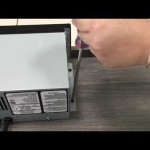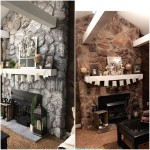French Cast Stone Fireplace Mantels: Elegance and Enduring Beauty
French cast stone fireplace mantels represent a sophisticated and timeless design choice for homeowners seeking to elevate the aesthetic of their living spaces. These mantels, meticulously crafted from a composite material, offer a compelling alternative to natural stone, combining durability, affordability, and versatility. They encapsulate the classic elegance of French architecture, bringing a touch of European charm and grandeur to any interior.
Cast stone, the material used to construct these mantels, is a mixture of cement, aggregates (such as sand and crushed stone), and pigments. This carefully formulated blend is poured into molds, allowing for the precise replication of intricate designs and textures found in traditional French fireplaces. The resulting product possesses a stone-like appearance and feel, indistinguishable from natural stone to the untrained eye, while offering significant advantages in terms of weight, cost, and consistency.
The appeal of French cast stone fireplace mantels lies not only in their visual allure but also in their functional benefits. They provide a focal point for the room, anchoring the space and drawing the eye to the warmth and ambiance of the fireplace. Moreover, they offer a practical surface for displaying decorative items, such as photographs, vases, and artwork, further personalizing the living area.
Installation of a French cast stone fireplace mantel typically requires professional expertise, as the components can be heavy and require precise alignment. However, once installed, the mantel is remarkably durable and requires minimal maintenance. Regular dusting and occasional cleaning with a mild cleaning solution are typically sufficient to keep the mantel looking its best for years to come.
The Benefits of Choosing Cast Stone over Natural Stone
While natural stone fireplaces undoubtedly possess a certain rustic charm, cast stone offers several advantages that make it a more practical and cost-effective choice for many homeowners. These advantages stem from the manufacturing process and the inherent properties of the material itself.
Firstly, cast stone is significantly more affordable than natural stone. The extraction and shaping of natural stone require specialized equipment and skilled labor, resulting in higher material costs. Cast stone, on the other hand, is produced in a controlled factory environment, allowing for economies of scale and reduced production expenses. This cost difference can be substantial, making cast stone an attractive option for budget-conscious homeowners.
Secondly, cast stone offers greater design flexibility than natural stone. The molding process allows for the creation of intricate details and complex shapes that would be difficult or impossible to achieve with natural stone. This flexibility enables manufacturers to replicate a wide range of French fireplace designs, from simple and understated to ornate and elaborate. Homeowners can choose a mantel that perfectly complements their existing décor and reflects their personal style.
Thirdly, cast stone is more consistent in color and texture than natural stone. Natural stone can exhibit variations in color, veining, and texture, even within the same quarry. These variations can make it challenging to achieve a uniform look across the entire fireplace mantel. Cast stone, however, is produced with carefully controlled pigments and aggregates, ensuring a consistent and predictable appearance. This consistency is particularly important for homeowners who desire a clean and modern aesthetic.
Finally, cast stone is often lighter than natural stone, making it easier to handle and install. This reduced weight can simplify the installation process and reduce the structural requirements of the surrounding wall. While professional installation is still recommended, the lighter weight of cast stone can translate into lower labor costs.
Exploring Different French Fireplace Mantel Styles
French fireplace mantels are characterized by their elegance, symmetry, and attention to detail. Within this broad category, several distinct styles have emerged over time, each reflecting different periods and regional variations in French architecture. Understanding these styles can help homeowners choose a mantel that aligns with their personal tastes and the overall aesthetic of their home.
The Louis XV style, popular in the 18th century, is characterized by its graceful curves, rococo ornamentation, and asymmetrical designs. These mantels often feature intricate carvings of flowers, leaves, and shells, reflecting the opulence and refinement of the French court. Louis XV mantels are typically made from light-colored stone, such as limestone or marble, and are designed to create a sense of lightness and airiness.
The Louis XVI style, which followed the Louis XV period, represents a shift towards a more classical and restrained aesthetic. These mantels feature symmetrical designs, clean lines, and neoclassical motifs, such as columns, pilasters, and geometric patterns. Louis XVI mantels are often made from white or gray stone and are designed to convey a sense of order, balance, and proportion.
The Empire style, popular during the Napoleonic era, is characterized by its grandeur, scale, and use of imperial symbols. These mantels often feature bold architectural elements, such as columns, obelisks, and eagles, reflecting the power and authority of the French Empire. Empire mantels are typically made from dark-colored stone, such as marble or granite, and are designed to create a sense of drama and majesty.
Provincial French mantels, also known as French Country mantels, offer a more rustic and informal aesthetic. These mantels often feature simple designs, natural materials, and a weathered finish, reflecting the charm and simplicity of rural French life. Provincial French mantels are typically made from rough-hewn stone or wood and are designed to create a cozy and inviting atmosphere.
Beyond these traditional styles, modern interpretations of French fireplace mantels are also available. These mantels often incorporate clean lines, minimalist designs, and contemporary materials, while still retaining the elegance and sophistication of French architecture. Modern French mantels are a versatile option for homeowners who desire a blend of classic and contemporary design.
Installation and Maintenance Considerations
Proper installation and maintenance are crucial for ensuring the longevity and beauty of a French cast stone fireplace mantel. While cast stone is a durable material, it is essential to follow the manufacturer's instructions and take appropriate precautions during installation and subsequent care.
Installation of a cast stone fireplace mantel is generally not a do-it-yourself project and should be entrusted to experienced professionals. The components of the mantel can be heavy and require precise alignment to ensure stability and structural integrity. A professional installer will have the necessary tools, equipment, and expertise to complete the installation safely and efficiently.
Before installation, it is important to ensure that the surrounding wall is structurally sound and capable of supporting the weight of the mantel. If necessary, the wall may need to be reinforced or modified to provide adequate support. The installer will typically use a combination of mortar, anchors, and shims to secure the mantel to the wall.
Once the mantel is installed, it is important to allow the mortar to cure completely before using the fireplace. The curing process can take several days or even weeks, depending on the ambient temperature and humidity. During this time, it is essential to avoid applying any stress or weight to the mantel.
Maintenance of a French cast stone fireplace mantel is relatively simple. Regular dusting with a soft cloth or brush is typically sufficient to remove surface dirt and debris. For more stubborn stains or grime, a mild cleaning solution can be used.
It is important to avoid using harsh chemicals or abrasive cleaners, as these can damage the surface of the cast stone. A neutral pH cleaner specifically designed for stone surfaces is recommended. Always test the cleaner in an inconspicuous area before applying it to the entire mantel.
In addition to regular cleaning, it is also important to inspect the mantel periodically for any signs of damage, such as cracks or chips. Small cracks can often be repaired with a patching compound specifically designed for cast stone. Larger cracks or chips may require professional repair.
Finally, it is important to protect the mantel from excessive heat and moisture. Avoid placing combustible materials, such as wood or paper, directly on the mantel, and ensure that the fireplace insert or firebox is properly sealed to prevent smoke and soot from staining the mantel. With proper care and maintenance, a French cast stone fireplace mantel can provide years of beauty and enjoyment.

Cast Stone Fireplace Mantel Contorno Camino Mensole Design

French Devinci Cast Stone

Amhurst Cast Stone Fireplace Mantels Old World Stoneworks

Custom New French Stone Fireplace Mantels

Newport Cast Stone Fireplace Surround Oregon Castings And Design

Amhurst Cast Stone Fireplace Mantels Old World Stoneworks

New French Cast Stone Fireplace Oregon Castings And Design

Country French Fireplace Surrounds Cast Cement Devinci Stone Mantels Surround

Cast Stone Fireplaces So Much Better With Age

French Devinci Cast Stone
Related Posts








